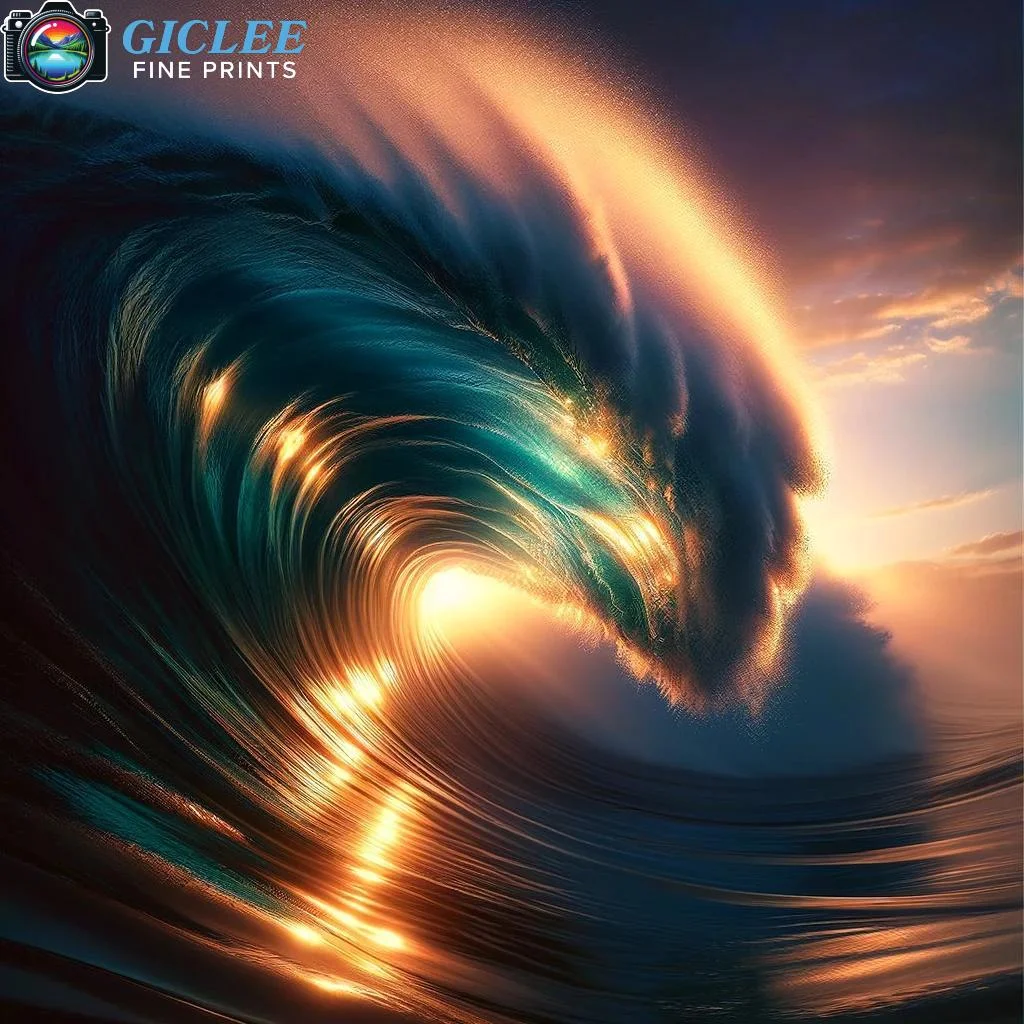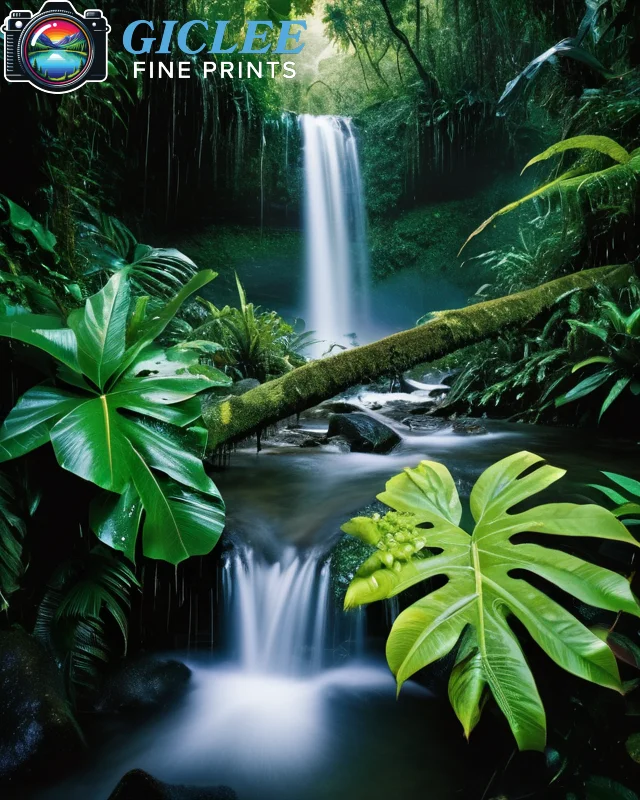
Canvas prints have become one of the most popular ways to showcase artwork and photography, offering a gallery-style, professional presentation that appeals to a wide range of buyers. Crafting and selling premium-quality canvas prints requires a keen understanding of materials, printing techniques, and the marketplace. Whether you’re an artist, photographer, or entrepreneur looking to enter the canvas print business, following expert advice can help you create stunning products that attract discerning buyers. At Giclee Fine Prints, we specialize in producing high-quality canvas prints that highlight the beauty of your work.
Choosing the Right Canvas Material
The quality of the canvas material plays a critical role in the final look and durability of your canvas prints. Choosing the right canvas ensures that your prints not only look great but also last for years.
Key Considerations:
- Cotton vs. Polyester Canvas: Cotton canvas is often regarded as the superior option for premium-quality canvas prints because it offers a natural, textured surface that absorbs ink beautifully. Cotton provides a more authentic, artistic look, closely resembling the texture of a painting. Polyester canvas, while less expensive, doesn’t absorb ink as well, leading to less vibrant and detailed prints. However, polyester can be useful for more budget-friendly options.
- Poly-Cotton Blend: A popular choice for high-quality prints, poly-cotton blend canvas combines the best of both worlds, offering the durability of polyester with the softness and ink absorption of cotton. It’s ideal for creating gallery-worthy prints with rich colors and fine details.
- Weight and Thickness: Look for canvas that has a weight of at least 300 GSM (grams per square meter) for durability and a premium feel. Heavier canvases are more resistant to sagging and offer better support for larger prints.
Best For:
- High-end fine art reproductions and photography prints where detail, texture, and longevity are essential.
- Premium buyers who expect a professional, gallery-quality finish on their prints.
Understanding Printing Techniques for Superior Results
The printing process is crucial in ensuring your canvas prints are vivid, detailed, and true to the original artwork or photo. Choosing the right printing method can make all the difference in achieving a professional finish.
Giclee Printing:
- Best for Fine Art and Photography: Giclee printing is considered the gold standard for premium canvas prints. It uses high-resolution inkjet printers and pigment-based inks to produce rich, vibrant colors with exceptional detail. Giclee prints are also archival quality, meaning they can last for decades without fading or deteriorating.
- Pigment-Based Inks: These inks offer superior color accuracy and longevity compared to dye-based inks. They are also resistant to UV light, ensuring that your prints remain vibrant even when displayed in well-lit environments.
- High DPI Resolution: For premium-quality canvas prints, look for printers that offer a resolution of at least 1200 DPI (dots per inch). This ensures that your images are sharp and detailed, even when printed at large sizes.
Best For:
- Photographers looking to produce high-quality reproductions of their work with true-to-life colors.
- Artists seeking to create limited-edition prints that closely resemble their original pieces.

Perfecting the Gallery-Wrap Technique
The gallery wrap is a popular presentation style for canvas prints, where the image is wrapped around the edges of the canvas stretcher bars, creating a frameless, modern look. Executing the gallery-wrap technique properly is essential for a clean, professional finish.
Key Tips:
- Choose the Right Size: When preparing your artwork for a gallery wrap, ensure that the image extends far enough beyond the main canvas area to wrap around the edges. You don’t want important parts of the image to be cut off or obscured. Aim for at least 1.5 to 2 inches of additional image or background for the wrap.
- Sharp Corners and Clean Lines: The edges of a gallery-wrapped canvas should be tightly folded with crisp, sharp corners to achieve a professional look. Make sure the canvas is stretched evenly across the frame to avoid sagging or warping.
- Mirror Wrap vs. Image Wrap: Some artists and photographers prefer to use a mirror wrap technique, where the outer edges of the image are mirrored onto the sides. This helps preserve the integrity of the main image, especially if you’re working with detailed or important visual elements close to the edges.
Best For:
- Artists and photographers seeking a sleek, modern presentation without the need for traditional framing.
- Contemporary spaces and buyers who appreciate minimalist, frameless art displays.
Framing Options to Elevate Your Canvas Prints
While the gallery wrap creates a frameless look, offering framed canvas prints can add an additional layer of sophistication and appeal to a wider range of buyers. Framing enhances the presentation and makes the artwork feel more polished and complete.
Framing Options:
- Floating Frames: A floating frame is a popular choice for canvas prints, as it gives the illusion that the canvas is “floating” within the frame without touching the edges. This style complements the gallery wrap and adds a touch of elegance while maintaining a modern aesthetic.
- Traditional Frames: For buyers seeking a more classic or traditional look, offering wooden or metal frames in various finishes (such as black, white, or natural wood) can add a refined touch. This option is ideal for more formal environments or buyers who prefer a framed art style.
- Custom Framing: Offering custom framing options allows buyers to choose a frame that best suits their personal taste or home decor. Providing different styles, colors, and materials can make your canvas prints more versatile and appealing to a broader audience.
Best For:
- High-end buyers who prefer a more polished and finished look for their canvas prints.
- Home decorators and interior designers seeking custom frames to match specific interior styles.

Marketing and Selling Premium Canvas Prints
To succeed in selling premium-quality canvas prints, you need a strong marketing strategy that highlights the uniqueness and quality of your product. Here are some key ways to effectively market and sell your canvas prints.
Building a Strong Online Presence:
- High-Quality Imagery: Since buyers cannot physically see or touch your canvas prints online, it’s important to showcase your work through high-resolution images that accurately represent the texture, color, and finish of the canvas. Include close-up shots that highlight the gallery wrap, framing, and material quality.
- Social Media Marketing: Platforms like Instagram, Pinterest, and Facebook are powerful tools for showcasing your artwork or photography and reaching potential buyers. Regularly post updates, behind-the-scenes content, and customer testimonials to build engagement.
- E-Commerce Integration: Make it easy for customers to purchase your canvas prints online by integrating an e-commerce platform like Shopify or Etsy into your website. Offering secure payment options, clear product descriptions, and sizing information will help improve the shopping experience.
Targeting Art Buyers and Collectors:
- Limited-Edition Prints: Creating limited-edition canvas prints adds a sense of exclusivity and rarity, making your products more desirable to collectors. Number and sign each print to enhance its value and appeal.
- Collaborating with Interior Designers: Partnering with interior designers can expand your market by showcasing your prints in model homes, offices, or commercial spaces. Designers often look for high-quality artwork to feature in their projects.
- Art Shows and Exhibitions: Participating in local or national art shows, galleries, or exhibitions gives buyers the opportunity to see your canvas prints in person. This is especially important for premium-priced products, as potential buyers often prefer to inspect the quality firsthand before making a purchase.
Best For:
- Artists and photographers looking to build a strong brand and sell high-end, exclusive prints.
- Collectors and interior designers seeking premium, gallery-quality artwork for sophisticated spaces.
Setting the Right Price for Premium Canvas Prints
Pricing your premium canvas prints effectively is key to achieving success in the art market. You’ll need to strike a balance between covering production costs, maintaining profitability, and offering fair value to your buyers.
Pricing Strategies:
- Consider Your Costs: Factor in the cost of materials (canvas, inks, framing), production time, and any additional overhead, such as packaging and shipping. Be sure to account for any customizations or limited-edition features that increase the value of your product.
- Assess Your Market: Research similar canvas prints within your niche to understand what buyers are willing to pay. Consider the reputation and experience of the artists in your field when comparing prices.
- Create Tiered Pricing: Offer different price points based on the size and presentation of your canvas prints. For example, a large gallery-wrapped canvas may command a higher price than a smaller, framed print. Limited-edition prints can also be priced higher due to their exclusivity.
Best For:
- Artists and photographers selling high-quality canvas prints who want to ensure they’re pricing their work competitively while covering their costs.
- Buyers looking for unique, premium-quality artwork with the added value of customization or limited editions.
Contact Us
Our address is: 3816 Pioneer Trail Ste #3, South Lake Tahoe, CA 96150
Email: Info@gicleefineprints.com
FAQs
Giclee canvas prints are considered superior due to their high-resolution inkjet printing, archival-quality inks, and ability to capture fine details and vibrant colors. They are designed to last for decades without fading or deteriorating.
Yes, offering both gallery-wrapped and framed canvas prints allows you to cater to different buyer preferences. Some customers may prefer a frameless, modern look, while others may seek a more traditional, framed presentation.
The best size depends on your target market. Offering a variety of sizes, from small prints to large, statement pieces, will allow you to appeal to different buyers with different space needs. Popular sizes include 16×20, 24×36, and larger custom dimensions.


